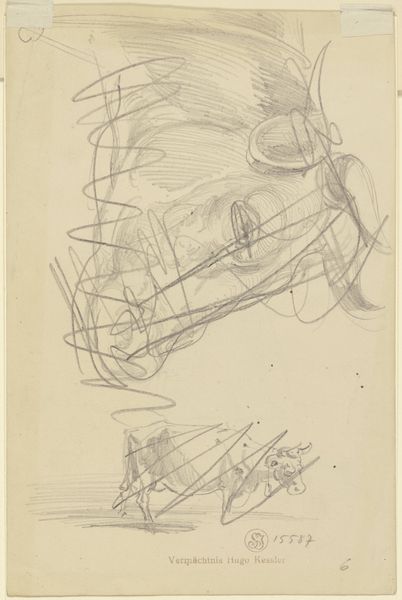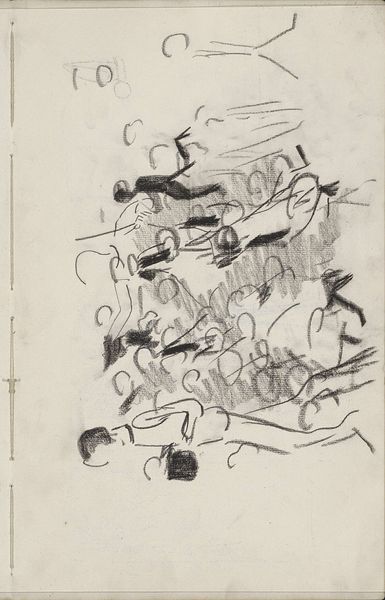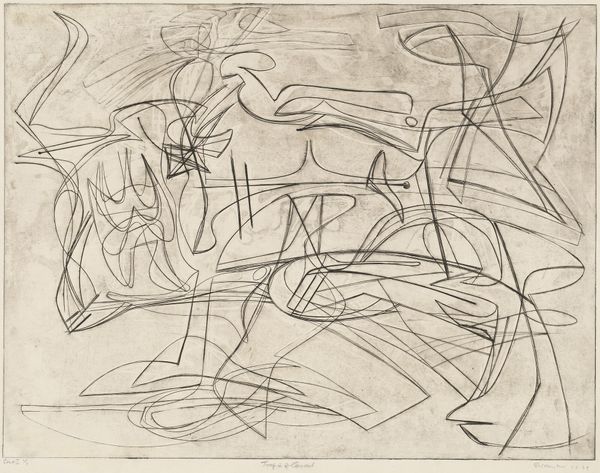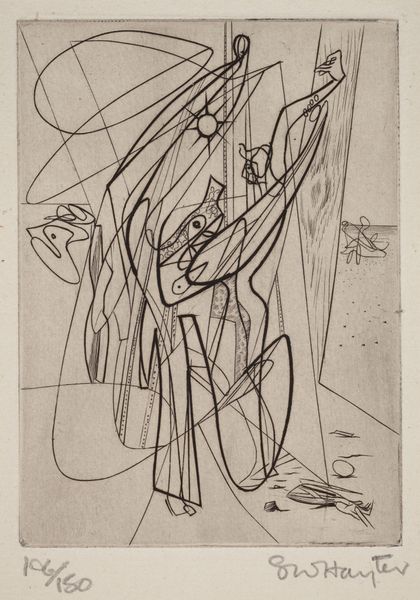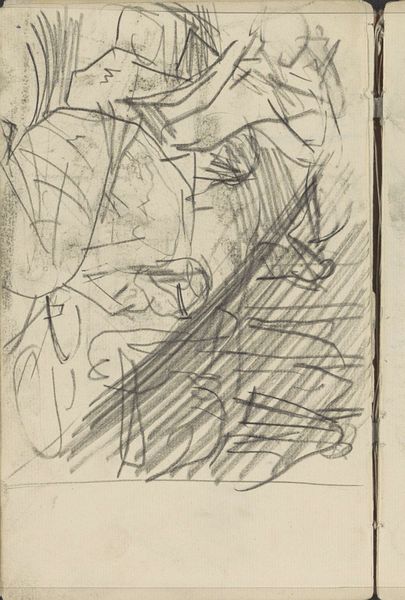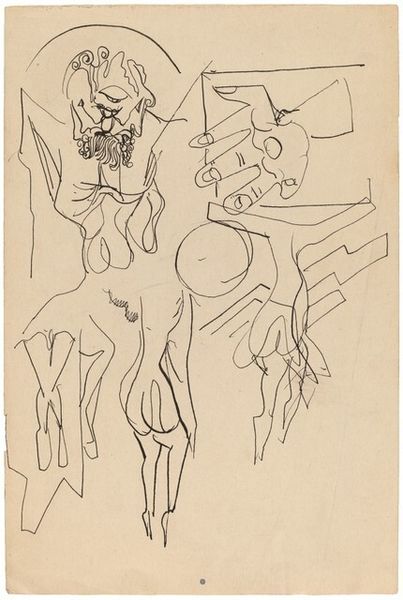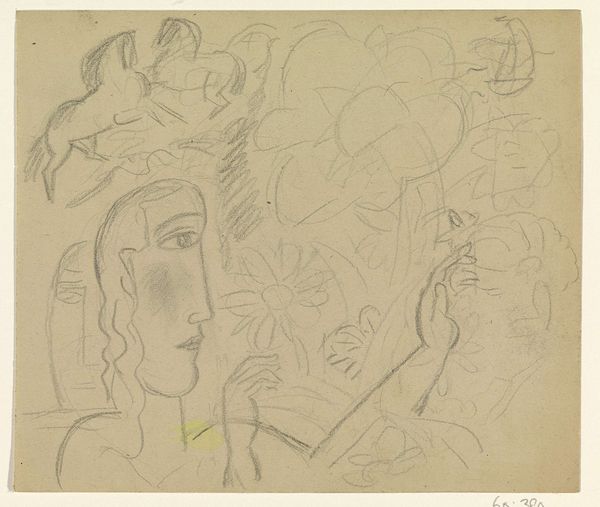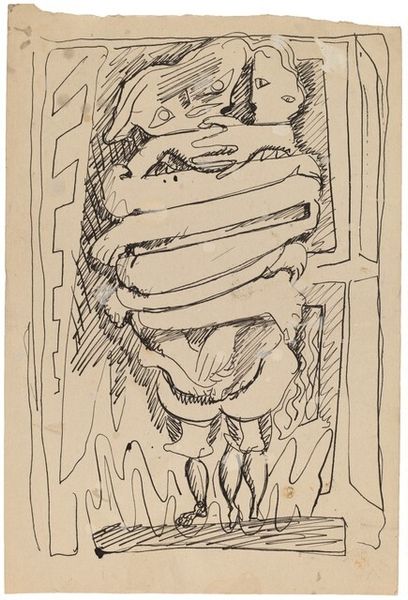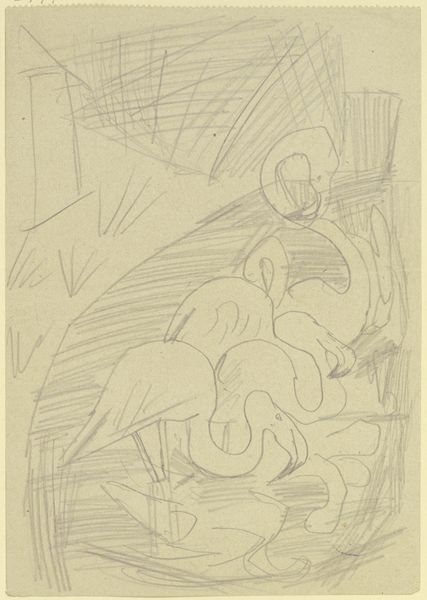
drawing, pencil
#
drawing
#
pen sketch
#
pencil sketch
#
figuration
#
linocut print
#
pencil
#
abstraction
Dimensions: height 179 mm, width 209 mm
Copyright: Rijks Museum: Open Domain
Editor: Here we have "Mensen," a pencil drawing by Leo Gestel, created sometime between 1891 and 1941. It’s currently held at the Rijksmuseum. It looks like a cluster of abstract, vaguely human shapes, maybe bodies intertwining? I'm getting a sense of...fragmentation? What do you see in this piece? Curator: Fragmentation is a key word, absolutely. Given the period – think the World Wars, societal shifts, and the rise of industrialization – this drawing can be interpreted as a reflection on the fragmented nature of the human experience. Notice how the bodies aren't whole; they bleed into one another, lacking distinct identities. Editor: That makes sense. It definitely captures a lack of clear boundaries, a sort of loss of self. Curator: Precisely. Consider Gestel's engagement with modernism. The lack of realism can be seen as a conscious decision to move away from traditional representations of the human form. Do you think that that escape of traditions is significant? Editor: Definitely! It's like he’s actively challenging conventional expectations, suggesting a world where traditional structures and identities are collapsing. Curator: Right. And who suffers most during collapsing social paradigms? Where does Gestel implicate such struggles? Editor: Well, now that I think about it, I am noticing certain curves and shapes now which resemble feminine features. It could be an implication of what society's disruption means for women specifically. Curator: I couldn't agree more! Thank you for pointing that out! What a meaningful connection. Editor: It's fascinating how the context transforms the viewing experience. It’s more than just abstract shapes now; it's a visual commentary on the turmoil of the time, especially through a feminine gaze! Curator: Absolutely. Art provides powerful platforms, and it's up to us to unearth those deep meanings!
Comments
No comments
Be the first to comment and join the conversation on the ultimate creative platform.
